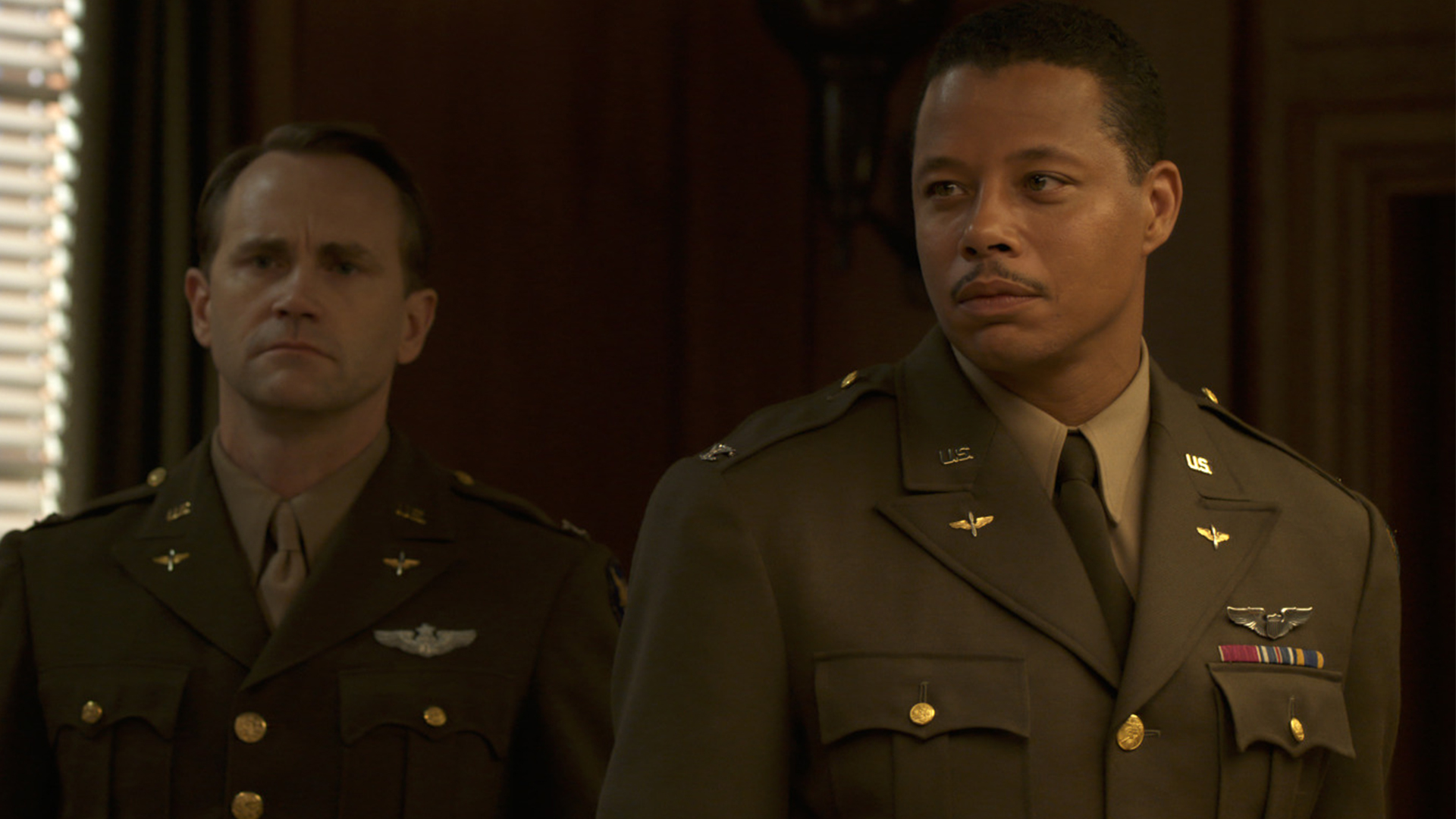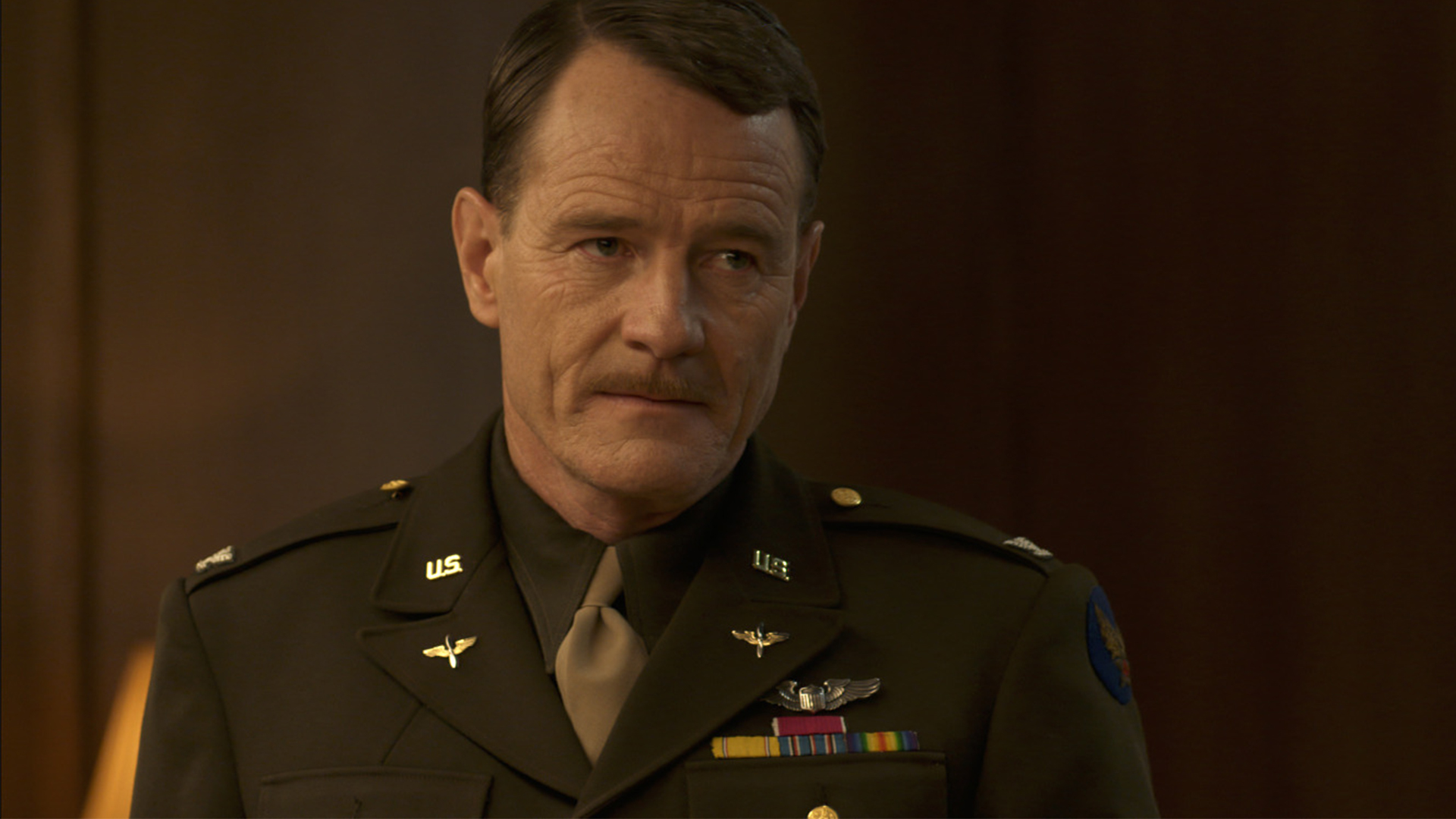Defining Moments: “We Will Not Go Away”
A powerful scene in Red Tails took its lead from real history.
“Defining Moments” is a continuing series exploring key scenes or sequences from Lucasfilm’s many productions. It examines storytelling craft, behind-the-scenes insights, and cultural legacies from each selection. Revisit an old favorite or discover something brand new…
Production: Red Tails (2012)
Lucasfilm’s production Red Tails (2012) was inspired by the true-life story of the heroic Tuskegee Airmen during World War II, America’s first Black military pilots who faced both an enemy in the skies and racial discrimination at home. Early on in the movie’s development, one key decision was whether to tell a story based explicitly on the real Airmen or to create a fictionalized account of the pilots’ experiences. Having conducted years of research, including interviews with many surviving veterans, executive producer George Lucas and the Lucasfilm team opted for the latter. A fictional account would allow the story to pull on many different true-life moments that made up the Tuskegee Airmen story.
One such moment comes early in Red Tails when Colonel A. J. Bullard (Terrence Howard), a Tuskegee Airmen commander, endures a confrontational meeting with skeptical military leadership at the Pentagon. The prejudiced officers are convinced that the Black pilots are underperforming during their combat missions overseas. At a time when the military was racially segregated, they could simply do away with the Black fighter squadron altogether. “I’m afraid you’re just going to have to suffer its failure,” says Colonel William Mortamus (Bryan Cranston).
Bullard does not back down. He calmly and passionately defends the integrity of his pilots and their ability to perform. He also calls out the less-than-equal support they’ve received. “We’re given hand-me-down planes, ordered to attack targets that have already been bypassed, fly patrols where the enemy hasn’t been seen for months,” he explains. “Now we’ve done every lowdown dirty job you’ve handed us, hoping that we would just limp along and go away. We will not go away. We have a right to fight for our country the same as every other American. So you shut us down, or you let us fly.”


The characters might be fictional, but the situation is not unlike one experienced by General Benjamin O. Davis, Jr., who during the war was a Lt. Colonel in charge of multiple Tuskegee Airmen units. As the son of America’s first Black Army general, Davis seemed a natural advocate for his fellow Airmen. In the 1930s, he’d been the only Black student at the West Point military academy where he was harshly ostracized on a daily basis. Few understood the racism inherent in the military hierarchy as well as he did.
When Davis and the 99th Fighter Squadron shipped out to North Africa to do battle with German forces over the Mediterranean Sea, a group of resentful white officers made appeals in Washington to remove the Black pilots from combat. Like the fictional Mortamus, they claimed the newcomers weren’t up to the task. The controversy soon became a topic of national debate, and Davis headed back to the capital to make his case in person. After he dared the Army to investigate the hard data, it was discovered that the Black pilots matched and sometimes even exceeded the performance of their white counterparts.
As is seen in Red Tails itself, this debate led to the Airmen receiving improved aircraft and higher-profile bomber escort missions over central Europe. They’d continue their impressive service record, and Davis would name his own fighter plane “By Request” in reference to their favored reputation among many white bomber units. Under the leadership of Davis and others like him, the Tuskegee Airmen understood that the most effective way to overcome adversity was to excel in every endeavor.
This and other true-life stories are chronicled in Lucasfilm’s feature-length documentary, Double Victory: The Tuskegee Airmen at War (2012), which is available to view on our official YouTube channel.
Teachers, students, and anyone interested in learning more about the heroic men and women who helped break the color barrier in the U.S. military can learn more at Lucasfilm.com/TuskegeeAirmen.
Lucas O. Seastrom is a writer and historian at Lucasfilm.

